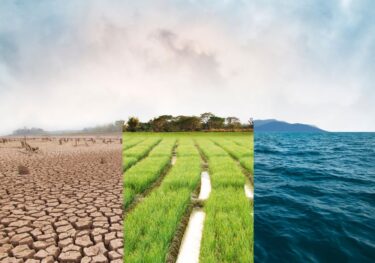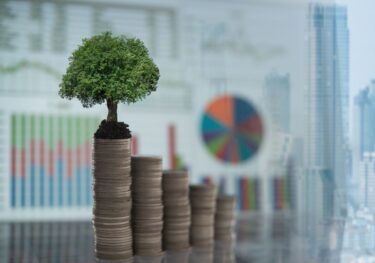Building a more successful business through resilience
A drought in northern China can affect the production of automobiles in Germany, while the US textiles sector might feel the effects of policies implemented in Brazil. Risk is all around us—climate change, political upheaval, biodiversity loss, human rights violations, water scarcity, AI disruption, inflation, tariffs and trade wars. Complex global supply chains mean it can be transmitted—in often unexpected ways—from one corner of the globe to another.
At its simplest, business creates value by turning the inputs it brings in, into outputs that people value and will pay for. Managers try to make this process as efficient as possible, and that includes the mitigation of risks that can disrupt business activity. Risk can take many forms, and as uncertainty is inherent in risk, you can never know precisely what form it will take or when it will appear. But you can still do something about it. By being aware of a broad range of risks, a business can better prepare and act, and potentially secure a stronger place in the market by doing so.
Thinking about risk from a sustainability perspective provides a useful foundation. Business resilience, in other words, is simply economic sustainability. Bringing in other aspects of sustainability allows for a comprehensive approach to understanding and managing risk.
What’s the mesoeconomy and why does it matter?
Risk doesn’t just appear inside a business’s walls, or even at its front door. To really understand exposure to risk, you need to look at how a business interacts with the broader economy. What does it purchase and from where, and what does it sell and to where? This is the value chain. Value chains extend right back to the extraction of raw resources from the environment and up to the final use of goods and services, and even further to their disposal.
Value chains involve business relationships, at least as far as people know who they are purchasing from. But for many value chains, the further from a business those relationships get, the more opaque they become. Sectors trade with sectors which trade with other sectors and so on, within their domestic country but also across borders and overseas. These economic interactions are subject both to the decisions of individual players, as well as broader domestic policy context and international trends.
This creates emerging complexity that is sometimes referred to as the “mesoeconomy”, which lurks somewhere in between the microeconomics of firm level decision making, and the macroeconomics of the functioning of the whole economy. The mesoeconomy is also the transmission mechanism for much risk. In other words, it is via supply chain disruptions that sustainability risk can impact a business’s activities.
Where is risk ‘hidden’ in supply chains and what to do about it?
Risk that resides in the mesoeconomic interactions of a business’s extended supply chain can be effectively “hidden” from the business manager’s view. But that doesn’t mean it doesn’t exist. An effective business leader should seek to address risk before it shows up as an unexpected and unwanted disruption to business activities—and seek to avoid the loss in revenue and profits that may accompany it.
Unlock exclusive economic and business insights—sign up for our newsletter today
This can begin with mapping and exploring vulnerabilities in the supply chain and being aware of where disruptive events are most likely to appear. Given the uncertainty and timeframes involved, this should take a forward-looking approach considering how both supply chains and risk will evolve over time. The sources of risk today may not be the same in one, two, five, or 50 years. Risk can also be interconnected, cumulative, and systemic by nature, and mitigating them may involve trade-offs. Scenario analysis can help by demonstrating the overall performance and effects of alternative pathways and actions.
Information gives power, and with economic evidence, strategic decisions can be based on a solid foundation. Contingencies can be drawn up, substitutes identified, stocks buffered, suppliers engaged with. Different targets and strategies for delivering them can be tested and compared, implemented with confidence, and then tracked to test performance over time, and adjusted as necessary. How risk emerges may be unpredictable, but that does not mean it cannot be addressed.
What is sustainability and how can it lead to commercial success?
Sustainability as a term and concept is not always clearly defined, but it’s useful to come at it from an economics perspective. There are several key lessons from economics when considering what sustainability means for business. First, commercial success requires economic sustainability. This means an understanding of the economic impact of business activities—or its ability to create value—and mitigation of business risk which could inhibit its ability to create that value. In other words, economic sustainability relates to business profitability and business resilience.
Second, a business should consider environmental and social components of sustainability. No business is completely insulated from the world it’s situated within. Nearly all economic activity involves some aspect of converting environmental resources into valuable goods and services at some point in the value chain, and much of that activity also impacts on the environment. Likewise, businesses both impact on and draw from the societies and communities in which they are based, be that as customers, labour, custodians, regulators, or other groups.
These components of sustainability can be a source of value or a source of risk, and stakeholders from customers, to regulators, to employees, to investors are increasingly switched on to them. Economic interaction with the environment and society may not be immediately apparent where it occurs somewhere in the mesoeconomy. But environmental and social risk can lead to economic disruption, and businesses are exposed to this disruption in often complex and hidden ways via their supply chains.
A comprehensive approach to sustainability can enable business leaders to better understand and mitigate risk. This will help them create valuable, resilient businesses with a competitive advantage, and ultimately lead to sustained commercial success.
See our Sustainability Risk Tool to understand potential vulnerabilities hidden in your supply chain. Get in touch to discuss how we can support you in mapping your exposure to risk and approach to risk management.
See a recent case study applying a comprehensive approach to sustainability for the US Textiles sector. Our infographic presents a sample of analysis including economic impact, exposure to a range of risks, target-setting, strategy testing, and metrics for reporting requirements.
Speak to us
Oxford Economics’ Sustainable Advisory Management Platform (S-MAP) for a comprehensive view of sustainability, integrating economic, environmental, and social impacts and risks. Using our economic expertise, models and tools, we help you assess these factors and develop effective strategies.
Tags:
Related Reports

Nature scenarios: What changing environmental risks mean for businesses
Quantifying the economic impacts of nature change means considering double materiality; economic activities can both impact and depend on nature.
Find Out More
Four steps to ensure corporate sustainability programs are actually sustainable
Sustainability is a long game. Here are four steps to ensure your sustainability programs are actually sustainable.
Find Out More
Greenomics – Series 2 | Ep. 1 | Shades of green: Retail investors’ sustainability preferences
Climate change is a threat multiplier – disrupting ways of life, threatening food sources, and fundamentally changing the environment in which we live. In this episode we explore the potential impacts of climate change on vulnerable communities, from increased migratory and conflict pressures to the unique relationship between Indigenous populations and nature. Sarah Nelson is joined by three of the team from Oxford Economics who have been working to understand the profound social implications of these factors, Shilpita Mathews, Beatrice Tanjanco, and Ilana Gottlieb.
Find Out More
Indirect climate risk in financial analysis
Climate and other sustainability challenges can affect the finance sector and have a material impact on returns to capital.
Find Out More
